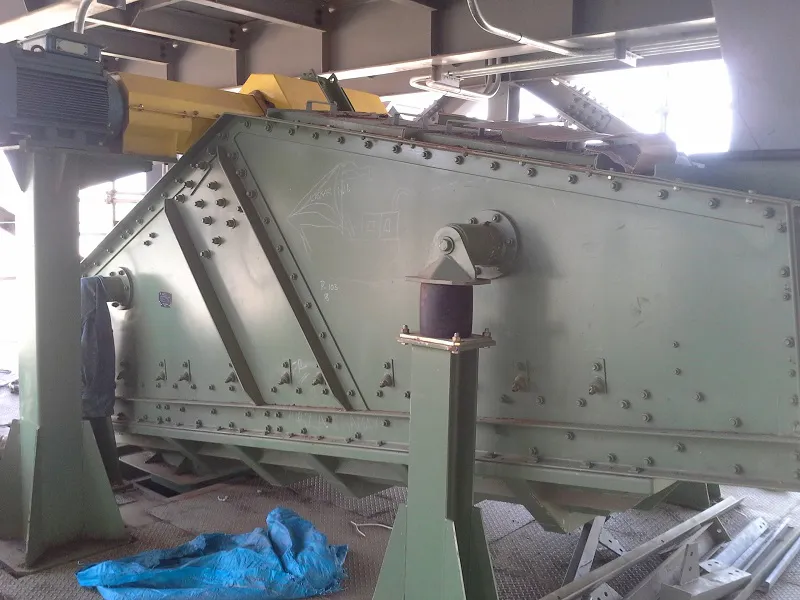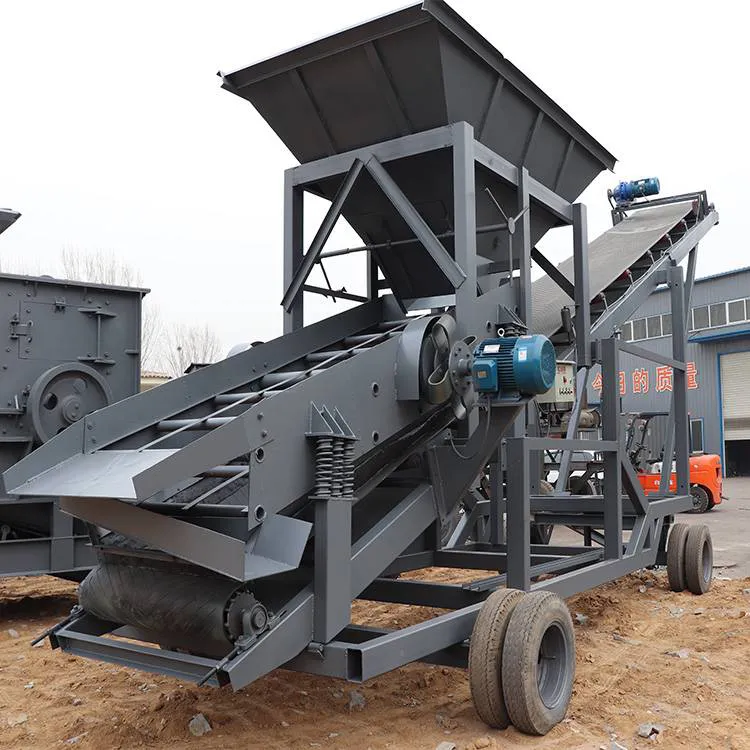time:May 16, 2024 source:ZEXCIT
A vibrating screen is a mechanical device used for separating, sifting, and sorting materials in various industries such as mining, construction, agriculture, and recycling. The primary function of a vibrating screen is to classify materials by size, separating smaller particles from larger ones. Here’s an overview of how a vibrating screen works:

A vibrating screen operates based on a simple principle: it uses a motor or other mechanical device to generate vibrations, which are transmitted to the screen surface. These vibrations cause the material on the screen to move and be sorted into different sizes.
Screen Surface:
The screen surface is typically made of woven wire mesh, perforated plate, or other materials. It has openings of specific sizes to allow smaller particles to pass through while retaining larger particles on the surface.
Vibration Generator:
The vibration generator can be an electric motor, an eccentric shaft, or other devices that create mechanical vibrations. It is attached to the screen frame and induces the vibrating motion.
Screen Frame:
The screen frame holds the screen surface and supports the vibrating mechanism. It is usually constructed from sturdy materials to withstand the vibrations and the weight of the materials being processed.
Damping System:
The damping system consists of springs or rubber mounts that absorb the vibrations and prevent them from being transmitted to the supporting structure or other equipment.
Drive System:
The drive system includes the motor and the transmission mechanisms (belts, pulleys, gears) that transfer power from the motor to the vibration generator.
Feeding:
Material to be screened is fed onto the screen surface, typically from a hopper or conveyor.
Vibration:
The vibration generator creates oscillatory movements in the screen surface. The amplitude and frequency of the vibrations can be adjusted to suit the material and desired separation.
Screening:
As the material moves across the vibrating screen, particles smaller than the screen openings fall through and are collected underneath. Larger particles continue to move across the screen surface until they are discharged from the end.
Separation:
The screened material is separated into different size fractions. Multiple screen layers (decks) can be used for more precise sorting, with each layer having different sized openings.

Inclined Vibrating Screen:
The screen surface is inclined, allowing gravity to help move the material across the screen. It is commonly used in mining and aggregate industries.
Horizontal Vibrating Screen:
The screen surface is horizontal, which requires the vibratory motion to move the material. It is often used in applications where a more controlled and precise screening is required.
Multi-Deck Vibrating Screen:
Multiple screen layers are stacked vertically, each with different sized openings, to sort materials into several fractions simultaneously.
Circular Vibrating Screen:
Uses a circular motion generated by an unbalanced flywheel or eccentric mechanism. Suitable for medium to coarse screening applications.
Linear Vibrating Screen:
Uses a linear motion created by two counter-rotating unbalanced motors or other mechanisms. Ideal for fine screening and dewatering applications.
Mining and Quarrying: Separating rocks, minerals, and ores.
Construction: Screening aggregates, sand, and gravel.
Recycling: Sorting waste materials, plastics, and metals.
Agriculture: Grading grains, seeds, and other agricultural products.
Chemical and Pharmaceutical: Classifying powders and granules.
Efficiency: High screening capacity and precise separation.
Versatility: Can handle a wide range of materials and particle sizes.
Adjustability: Vibration amplitude and frequency can be tuned for optimal performance.
Durability: Designed to withstand heavy loads and harsh operating conditions.
In summary, a vibrating screen is an essential piece of equipment for many industrial processes, providing efficient and effective material separation through controlled vibratory motion.

ZSK eccentrics series linear vibrating screen is a new and efficient universal screening equipment, screen box trajectory which is approximately a straight line. This series of screen machine embodies most of the advantages of a biaxial linear screen, with the most extensive scope and application prospects.
READ MORE
The DF Series Vibrator refers to a range of specialized vibrators used in various industrial applications to generate controlled vibrations. These vibrators are designed for reliability, durability, and efficiency, making them suitable for integration into equipment such as vibrating screens, feeders, conveyors, compactors, and sieves.
READ MORE
A flip flop vibrating screen is a type of vibrating screen that utilizes the principle of elasticity to effectively screen and separate fine materials. This unique design creates a flip-flop motion during the screening process, which helps prevent material blinding and pegging.
READ MORECopyright © 2023 Xinxiang Zongyuan Machinery Equipment Co., Ltd. | All Rights Reserved.